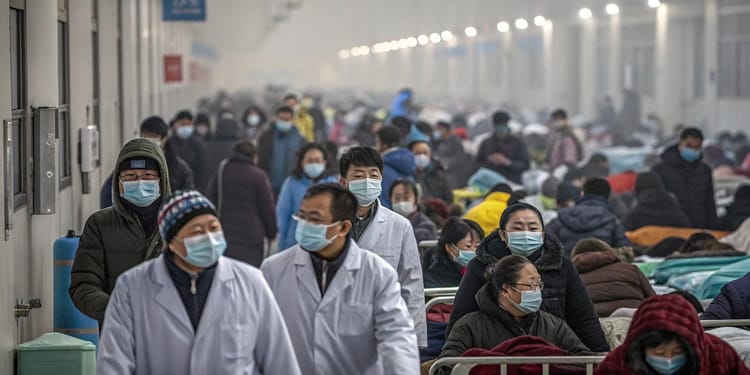The Overblown Fear of HMPV Virus

In the wake of the COVID-19 pandemic, the world has become hyper-vigilant about viruses. Every new outbreak or resurgence of an old pathogen seems to trigger a wave of anxiety. One such virus that has recently garnered attention is the Human Metapneumovirus (HMPV). While it’s natural to be cautious, the fear surrounding HMPV may be disproportionate to its actual threat. Let’s delve into why this might be the case and separate fact from fiction.
The Psychological "Scar" from the Pandemic
The COVID-19 pandemic has left a deep psychological scar on society. For years, we lived in a state of constant alert, fearing an invisible enemy that could strike at any moment. This heightened state of anxiety has made us more susceptible to overreacting to other viruses, even those that are relatively benign. HMPV, while not new, has recently been thrust into the spotlight, causing unnecessary panic among those still grappling with pandemic-induced trauma.

A Common, Long-Standing Virus
HMPV is not a novel virus. It was first identified in 2001, but it has likely been circulating in human populations for much longer. Like other respiratory viruses, such as the common cold or flu, HMPV is a seasonal pathogen that typically causes mild to moderate respiratory symptoms. Most people have probably encountered HMPV at some point in their lives without even realizing it. The virus is particularly common in children, the elderly, and individuals with weakened immune systems, but for the majority, it is not a cause for serious concern.
Medical Experts Are Not Overly Concerned
Despite the recent buzz, medical experts are not sounding the alarm about HMPV. Unlike COVID-19, which was a novel coronavirus with unknown long-term effects and high transmission rates, HMPV is a well-understood virus with predictable patterns. Health professionals emphasize that while HMPV can cause discomfort and, in rare cases, severe respiratory issues, it does not pose the same level of threat as COVID-19. The medical community’s calm approach should reassure the public that there is no need for panic.

Symptoms and Treatment of HMPV
The symptoms of HMPV are similar to those of other respiratory infections and include cough, fever, nasal congestion, and shortness of breath. In most cases, the illness is self-limiting, meaning it resolves on its own without the need for medical intervention. Treatment typically involves managing symptoms—rest, hydration, and over-the-counter medications to relieve fever and congestion. For those with more severe symptoms or underlying health conditions, medical care may be necessary, but such cases are relatively rare.

Conclusion
While it’s important to stay informed about potential health threats, it’s equally crucial to maintain perspective. The fear surrounding HMPV is, in many ways, a reflection of the lingering trauma from the COVID-19 pandemic. However, HMPV is a common, long-standing virus that medical experts do not consider a significant threat to public health. By understanding the facts and focusing on practical measures like good hygiene and staying home when sick, we can navigate this season of respiratory viruses without undue anxiety.


